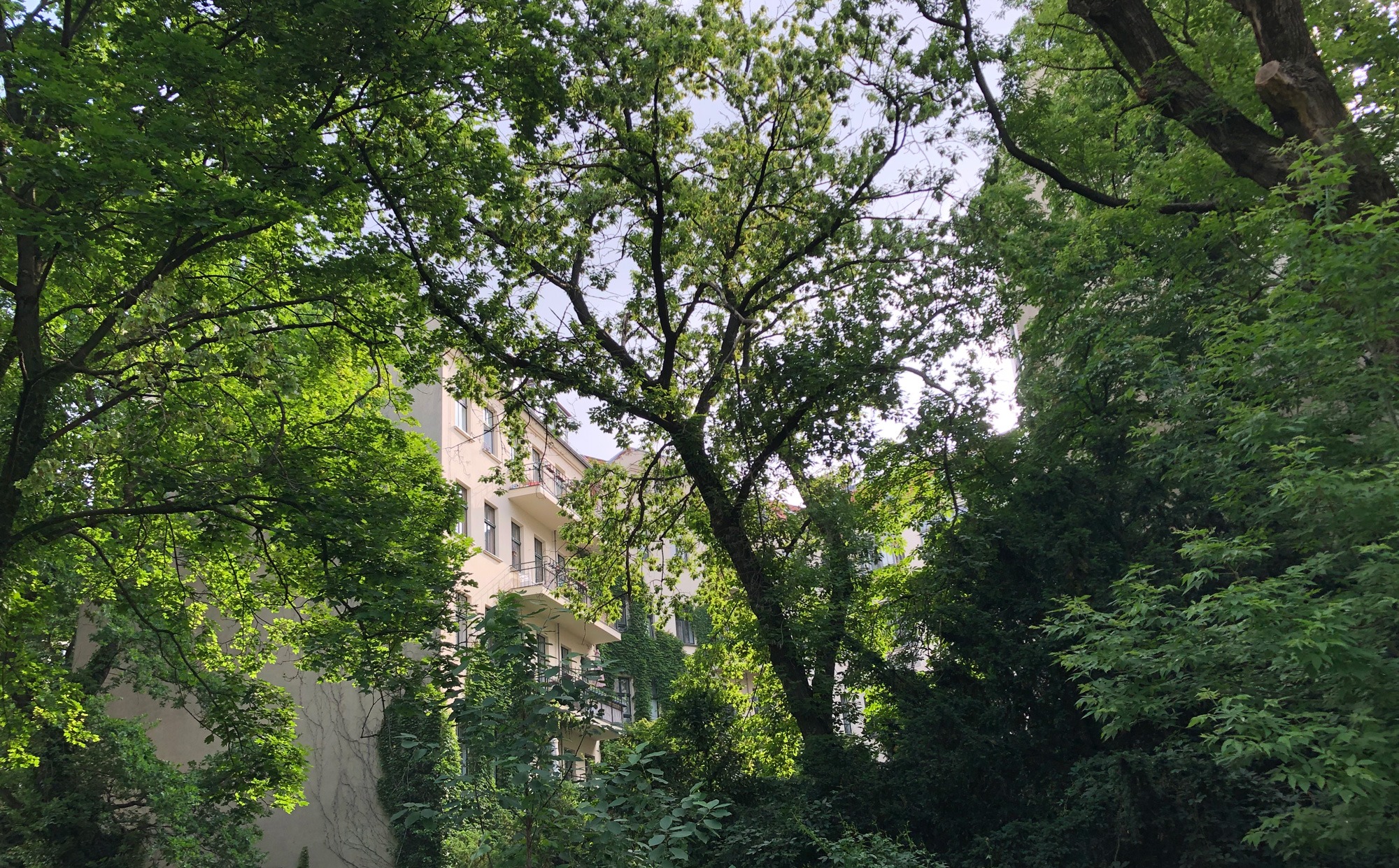The Old Jewish Cemetery: a place of retreat and witness to history in Berlin-Mitte

Birdsong, ivy-covered old trees – here you forget you're in the center of the capital. Just a stone's throw away from the hustle and bustle of Hackescher Markt, between Hackesche Höfe and Große Hamburger Straße, lies the Old Jewish Cemetery. A place to take a deep breath, but also a place that reminds us of the history of religious diversity in Berlin – but also of the war and the racial hatred of the Nazis.
The beginning of Jewish life in the Spandauer Vorstadt neighborhood
The Spandauer Vorstadt was the center of Jewish life in Berlin in the 18th and 19th centuries. This was most clearly documented by the magnificent "New Synagogue" on Oranienburger Straße, which was built between 1859 and 1866.
It all began with a Jewish cemetery. It was established in the 17th century, when the area around Oranienburger Straße was still undeveloped outside the gates of the city. Model Riess acquired a plot of land here and made it available to his community as a burial ground. The Jewish community in Berlin had only just been reestablished after the Brandenburg Elector had allowed 50 Jewish families expelled from Vienna to settle here. Around 100 years earlier, all Jews had been expelled from Berlin.
Photo: Ivy is a reminder of the building's former use. In the background: courtyard 6 of the Hackesche Höfe.

From cemetery to park
From 1672, the cemetery served as the final resting place for an estimated 10,000 Jewish Berliners. Moses Mendelssohn, philosopher of the Enlightenment and friend of Lessing, is the most famous person to be buried here. As burials were not permitted within inhabited areas in Prussia, the Jewish community opened a new cemetery further out on Schönhauser Allee in 1817. The last burial took place in the old cemetery in 1827.
Shortly afterward, a Jewish retirement home was built on Große Hamburger Straße, for which the cemetery served as a park. The Jewish boys' school, which opened in 1863, used the park for natural history lessons and created a school garden there.
Photo: The original gravestone of the philosopher Moses Mendelssohn has not been preserved

The destruction of the cemetery
The building of the old people's home on Große Hamburger Straße was confiscated by the "Secret State Police" (Gestapo) in 1942 and used as a "collection camp": 55,000 Jewish citizens were temporarily crammed in here before being deported to concentration camps.
In 1943, the Gestapo destroyed almost all of the cemetery's gravestones, tore out the bones of the dead and leveled the site. In the final days of the war in 1945, over two thousand dead bodies were buried here in mass graves.
Photo: The sculpture for the Jewish victims of fascism was originally created in 1957 for the Ravensbrück Memorial.

Remembrance and restoration
After the war, the site was returned to the Jewish community, which commemorated the cemetery and its destruction with a memorial plaque. In 1985, a sculpture by the sculptor Will Lammert was erected in honor of the Jewish victims of fascism on the site of the destroyed old people's home on Große Hamburger Straße.
In 2007 and 2008, the cemetery and the memorial were repaired, the foundation walls of the Jewish old people's home were made visible and the few remaining gravestones were restored and reerected. They had escaped destruction by the Nazis because they had been incorporated into the cemetery wall. Among the surviving gravestones is that of cemetery founder Model Riess and the first man to be buried here.

The cemetery park today
The southern part of the former cemetery is accessible during the day from Große Hamburger Straße and is closed in the afternoon. The memorial is accessible at all times and is located in front of the cemetery wall.
With its ivy-covered old trees, the park seems like an enchanted place and only a few visitors stray here. The only free-standing tomb is that of Moses Mendelssohn, but it is no longer the original stone.
Two memorial stones have been erected at the entrance to the grounds and others can be found on the southern cemetery wall. The cemetery's old trees can also be admired from courtyards 3 and 5 of Hackesche Höfe.
Opening hours: The cemetery is open daily with the exception of Shabbat and Jewish holidays.

Der Friedhof ist täglich mit Ausnahme von Schabbat und jüdischen Feiertagen geöffnet.
1. April bis 30. September
werktags 7.30 – 17 Uhr
sonntags von 8.00 – 17 Uhr
1. Oktober bis 31. März
werktags 7.30 – 16 Uhr
sonntags von 8.00 – 16 Uhr